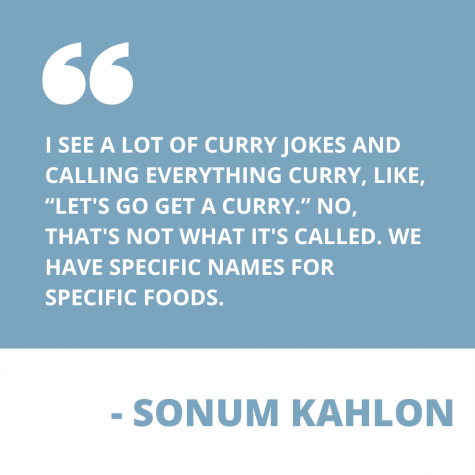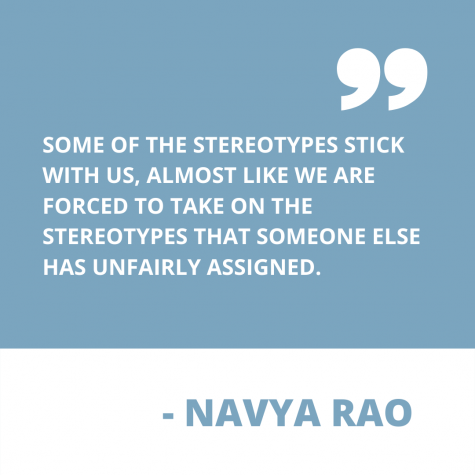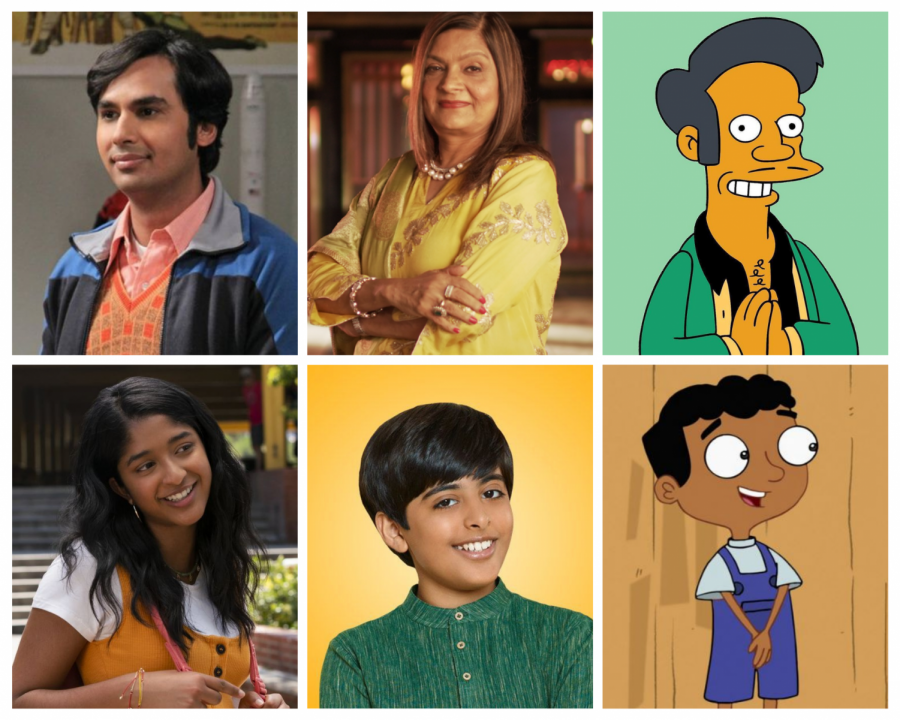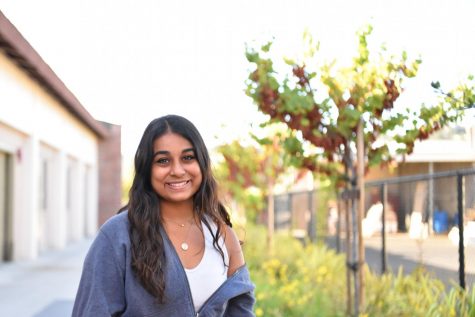Indian misrepresentation in media
Examining the inaccurate portrayal of Indians in Western media
Photos courtesy of Pinterest
September 12, 2020
When she was a junior in high school, Dr. Jasmine Singh, a private practice psychiatrist in California, encountered an uncomfortable experience while attending a medical summer camp in Washington, D.C.
“Oh, don’t all Indian people just smell like curry?” asked a fellow white camper.
Singh was taken aback by the question and later learned that false ideas like these were present in mainstream media. She was further surprised by these perpetuating stereotypes being showcased on TV shows and movies, as well as their impacts on her own life.
Indian misrepresentation in media has been prevalent since Indian characters emerged in American entertainment. Indians have constantly been inaccurately represented in TV shows and movies, further contributing to false images about their personalities and culture. Senior Navya Rao elaborates on the stereotypes she noticed with Ravi, a character from the Disney Channel TV show, “Jessie.”
“[Ravi] was this kid from India who had an overly exaggerated Indian accent, his pet was a reptile that he supposedly brought from India and he said things like, ‘Back in India, we spend hours studying,’” Rao said. “Overall, his character showcased a lot of things that perpetuated a bunch of stereotypes.”
Actress, artist and writer Sonum Kahlon further highlights the adverse effects of stereotyping Indians in Western media and wishes that Indian characters were more accurately displayed.

“There is a little bit of a difference between reality and these shows, but I’m torn,” Kahlon said in an interview. “I want Indian faces on TV, but I want us to be regular people. I don’t want us to be nerds or people born in America having to use fake accents. I hate it when they ask me to use an accent [during auditions], because I was born in California.”
Similarly, Singh believes that the false stereotypes about Indians in media often don’t accurately reflect the reality of the majority of Indian-Americans. She uses the example of always seeing a turbaned man driving a taxi in American shows or movies — growing up, Singh’s father wore a turban, but he is a doctor. She believes that media portrayals of Indian turbaned males in struggling positions are inaccurate depictions.
In recent months, a new Indian reality TV show, “Indian Matchmaking,” aired on Netflix, and quickly became a viral phenomenon among the Indian community. In the series, a matchmaker from Mumbai, Sima Taparia, attempts to set up young Indians and Indian Americans in hopes of kindling romance and eventual matrimony. However, according to those who watched the show, there are many problematic elements in the series, one of them being colorism — the opinion that fair skin is an advantageous trait for girls when finding a partner, which is a view that has existed in Indian culture for centuries. Kahlon elaborates on how this idea can negatively influence Indian girls.
“It just reinforces the trauma of being Indian,” Kahlon said. “It reinforces the crap we’ve had to grow up with such as Fair and Lovely, being told light skin is better, and sympathizing with the colonizer. White people came into India, white people caused the partition, and now we want to look like white people? It’s ridiculous, absolutely ridiculous.”
According to Rao, along with the inaccuracy of Indian stereotypes, there is an immense lack of positive representation of the culture within Western media.
“[Western media] never really shows the tradition that exists, the good values that exist and even the prosperity that can exist,” Rao said. “For example, although it is true that India does have very high poverty rates, that’s not the only thing that’s there and that doesn’t define the whole culture. I’m Indian and I’ve honestly never encountered anything even close to the things that are portrayed. It definitely just gives a very inaccurate view of the culture and makes the culture almost seem negative.”
As an individual pursuing a career in the arts, Kahlon feels that she is challenging the stereotypes about Indians only seeking careers in STEM fields. She believes breaking these norms will benefit Indians in the long run, and she encourages exploring different career paths.
“[Indian career stereotypes] make me feel very insecure,” Kahlon said. “It makes me feel like I’m not as good as a white person, or it makes me feel like I’m a rebel for not being that I[nformation] T[echnician], doctor, lawyer stereotype. I’m in a career of art and that needs to be normalized. We need more people to take that risk so that our faces are on billboards, so that they’re on TV or movies and so that these stereotypes can be eradicated.”
Though Indian misrepresentation can present false images to many who don’t understand Indian culture, Rao believes living in Cupertino serves as a benefit when it comes to opinions about inaccurate portrayals in media.

“[Living in Cupertino is] an advantage because it is a city where there are a lot of Indians, so if there is misrepresentation, it becomes easier to speak out about it,” Rao said. “It’s easier for [people around me] to understand that [the misrepresentation] is a very inaccurate representation of our culture, and it’s easier to keep negative thoughts away.”
According to Singh, although Indian misrepresentation has reduced over the years, Western media still has a long way to go. She believes that redefining the stereotypes Indians have become subject to is the only way Indians will begin to feel like their culture is respected.
“I think good steps are being taken, and we are definitely in a better place than we were a decade or two ago since there’s more Indian people in the media,” Singh said. “There’s no one Indian story. There’re so many different parts of India — there’s so many different people. There’s so many stories, and the more representation we have, the more variety and stories we can showcase. I think that would be the best way for Indians to feel more accepted in the U.S.”

















